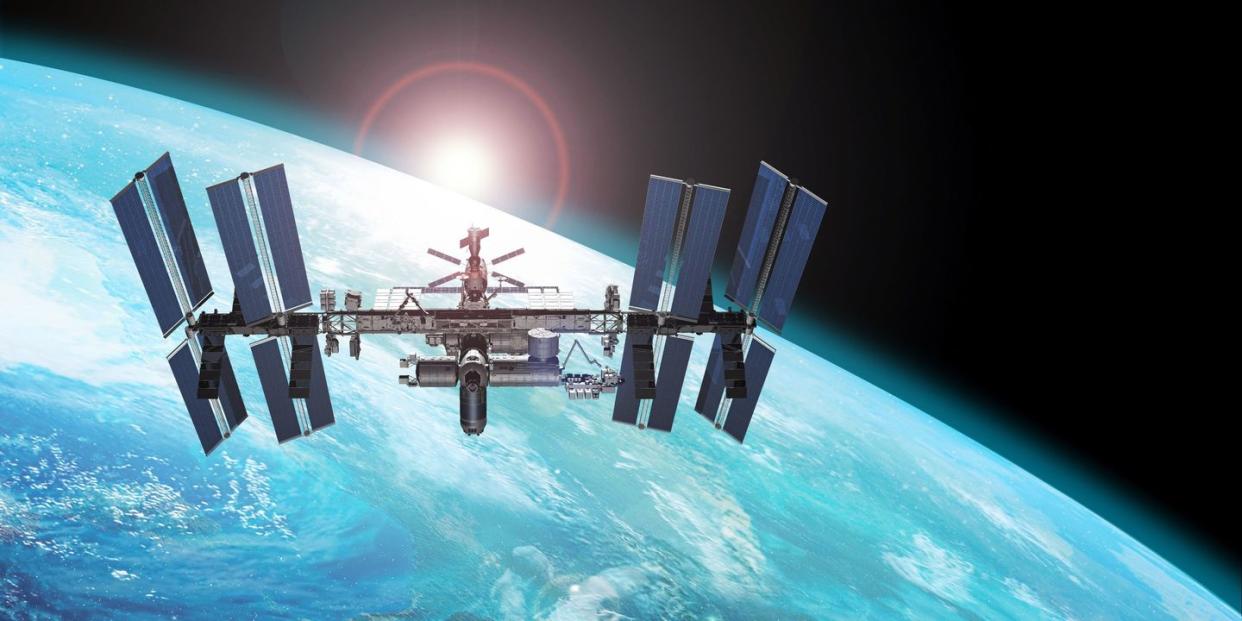There's a Supercomputer Stranded on the Space Station

Last week, astronauts on the International Space Station performed some routine surgery on an onboard computer by replacing a power inverter. But as is the case with nearly everything in space, there’s a backstory to this mundane activity that tells us something about how hard it is to live off-world.
There are two servers in space that are part of something called the Spaceborne Computer, an experiment designed to see how a commercial device can handle the rigors of the space environment. The supercomputer, made by Hewlett Packard, is blazing a trail for subsequent spacefaring computers. This explains why a guy with a spacesuit has been appearing at HP trade show booths:
We have a special guest visiting our booth at #MWC18. Our very own spaceman is traveling around the world to help us share the story of how @HPE is accelerating space exploration. Stop by to snap a photo and learn more about the Spaceborne Computer here: https://t.co/5KGU7mxsVf pic.twitter.com/sVQnFyIUPU
— HPE News (@HPE_News) February 26, 2018
NASA launched the two Spaceborne Computer servers into orbit on a SpaceX Dragon capsule in 2017. There are two identical systems on Earth, somewhere within HP’s Engineering Department, acting as control groups for the orbiting systems. The servers are powerful but aren't specially made for spaceflight, so they are what contracting wonks call commercial off-the-shelf (or COTS.)
The experiment is designed to run massive data sets in a changing radiation environment, including the ebb and flow of radiation from the sun. They are also power-hungry, and so the tests were designed to challenge the COTS servers to automatically adjust their power consumption. Imagine some algorithm inside the server acting as engineer Montgomery Scott, eking every bit of unneeded power from the systems.
These trailblazing servers were supposed to return to Earth in 2018, but lost their ticket home in the scheduling aftermath that followed the 2018 launch abort of a Russian capsule. As last week’s maintenance demonstrates, the computers are still working as they wait for a trip home in spring. (No date for return has been confirmed.) HP made them available to researchers and the real-world test continues. Of course, the post-flight analysis will be like a server autopsy, and crucial to finding exactly what weaknesses the COTS servers may develop during long-duration spaceflight.
HP says there are already lessons learned. “To say we’re ecstatic would be an understatement,” wrote Mark Fernandez, HP America’s Technology Officer, last year.
One investigation verified that lowering the server’s power and speed “can enable these systems to continue to operate correctly during high-radiation events,” the company said. “This may help scientists identify ways to use software rather than expensive, time-consuming or bulky protective shielding to protect computers from space radiation.”
Fernandez described the way the server can handle solar storms by reacting to them instead of hiding behind shielding. “If we suspect a component is out of parameters, we hunker down into a safe mode,” he said. “We stay in that safe idle configuration to make it through that time period. Once that event has passed, we execute a health check to ensure everything is performing well before resuming operation.”
The test also brought some truths home to coders who assumed the ISS enjoyed stable network connectivity. “Assuming a consistent acquisition of signal was an Earthly bias that crept into our software design,” Fernandez said. “In the future, we plan to design our space-bound (or remote) software stack differently to account for the much more frequent network anomalies.”
In space, no one can hear you call for IT support. The HP experiment also faced a familiar gap between the tech experts and the users, but this time they were in space. “We’re used to writing instructions for customer replaceable units (CRUs) to enable IT savvy customers to be able to resolve issues by using a provided replacement part,” Fernandez noted. “These CRU guidelines are woefully inadequate to hand to astronauts. In a fairly extensive process, we developed detailed instructions for customers that aren’t trained in IT and tailored them for the space environment.”
It’s easy to be distracted by the Geek Squad musings that come with these lessons. But don’t let the minutiae fool you: bringing off-the-shelf computing power to space is a major backbone for an age of commercialization. The key to opening space to private companies is using equipment that doesn’t take a national treasury to create and maintain. If this new age of spaceflight is going to take off, the next generation will be taking computers with them.
The Spaceborne Computer servers may be the trailblazers to all that follow. If they ever make it home, that is.
You Might Also Like

